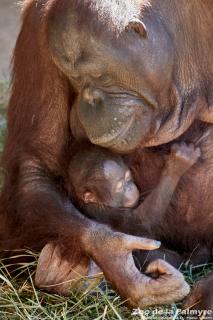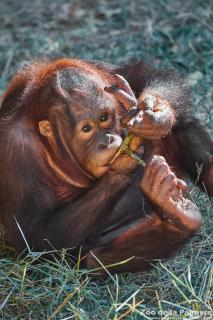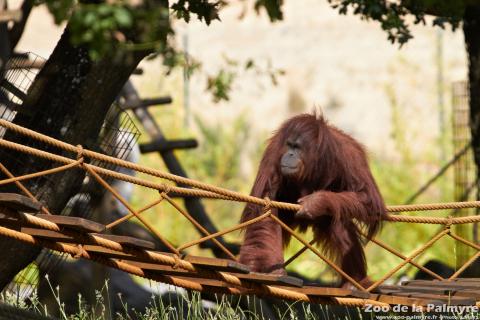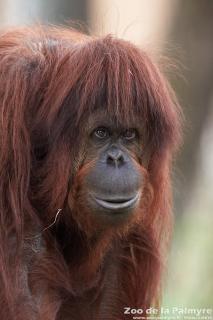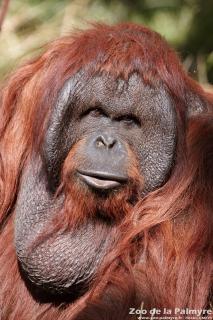Bornean Orangutan

Bornean Orangutan

-
Class
Mammalia -
Order
Primates -
Familly
Hominidae
-
 70–97cm
70–97cm -
 ♂ 60–85kg, ♀ 30–45kg
♂ 60–85kg, ♀ 30–45kg -
 8–9 months
8–9 months -
 1
1 -
 50 years
50 years
-
Diet
frugivorous (fruit, leaves, shoots, peel, grains, invertebrates) -
Habitat
tropical forest -
Range
Malaysia and Indonesia (Borneo)
-
 This species is part of a European Breeding Program
This species is part of a European Breeding Program
-
Population in the wild
En diminution -
IUCN REDLIST status

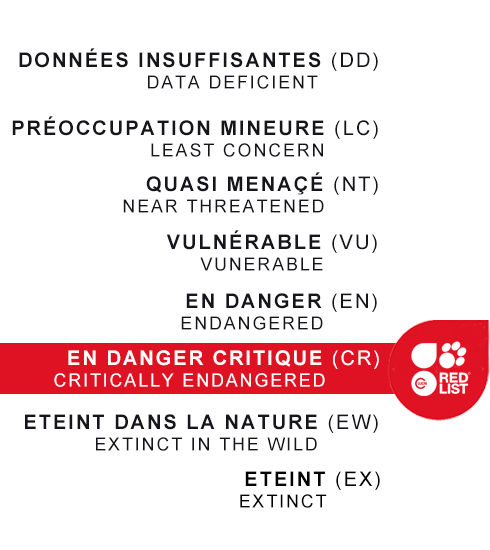
Orangutan means ‘man of the woods’ in Malay.
Male Orangutans exhibit sexual bimaturity, which means there are two different forms of adult male. These are:
- highly territorial males who are very big and heavy, with long hair, large facial disks with flanges on either side of their faces and laryngeal sacs that they fill with air to amplify their long calls, which allow them to keep other males at a distance and to attract females in heat;
- non-territorial males who are smaller, look more like females and don’t have any secondary sexual characteristics. Opportunistic and silent, they roam the forest and mate with or often rape females that they chance upon.
Orangutans are semi-solitary and groups sometimes form where food is plentiful. Dominant males establish their territories on existing, smaller, female territories and strive to prevent other males from gaining access to them. When two dominant males find themselves in the presence of a receptive female, they fight. Unlike females, who as adults establish their territory near their birthplace, males set up theirs far from relatives.
Orangutans are the largest tree-dwelling animal and their physiques are fully adapted to a life of climbing and hanging in the canopy. Females hardly ever descend to ground level but males may be limited to it when trees in secondary forests are unable to support their weight. Their diet is made up of more than 200 fruits, some with hard shells that they break with their powerful jaws.
Females generally first give birth at about the age of 15 years and only do so 4 or 5 times in their life – this species has a particularly long gap of 6–7 years between births.
Every evening, Orangutans make nests of branches in the forks of a tree trunk at a height of 10–20m about ground.
Orangutans are endangered in their biotope, mainly due to deforestation for logging and for conversion into areas for palm oil cultivation, but also due to the illegal trade in their young in Asia.

